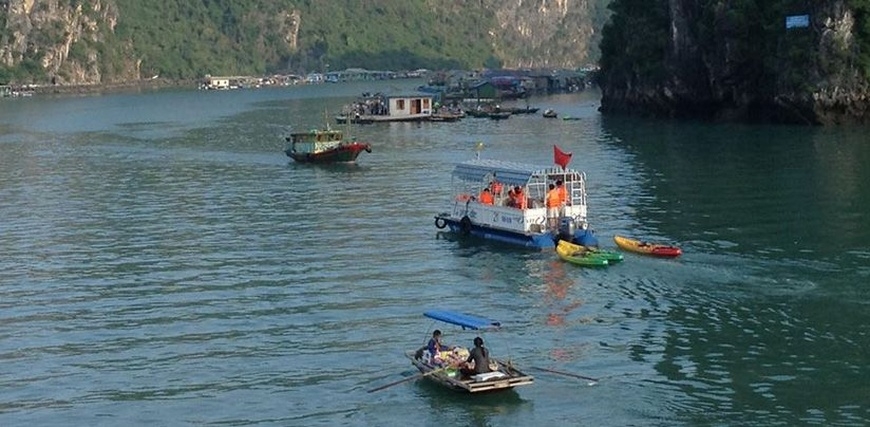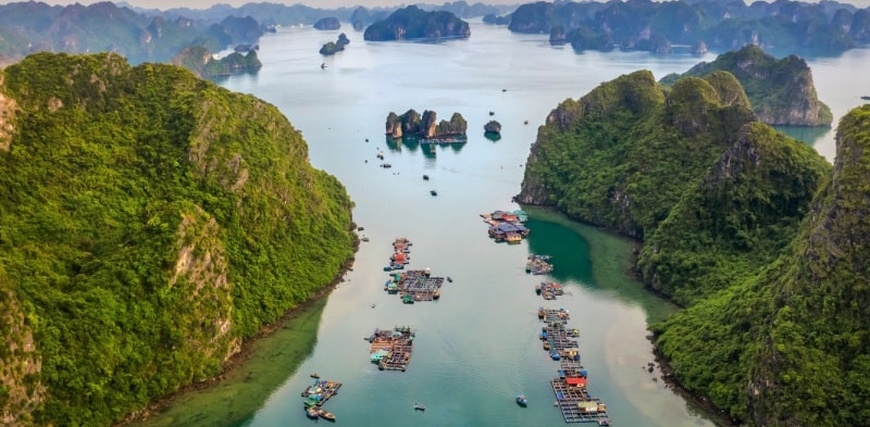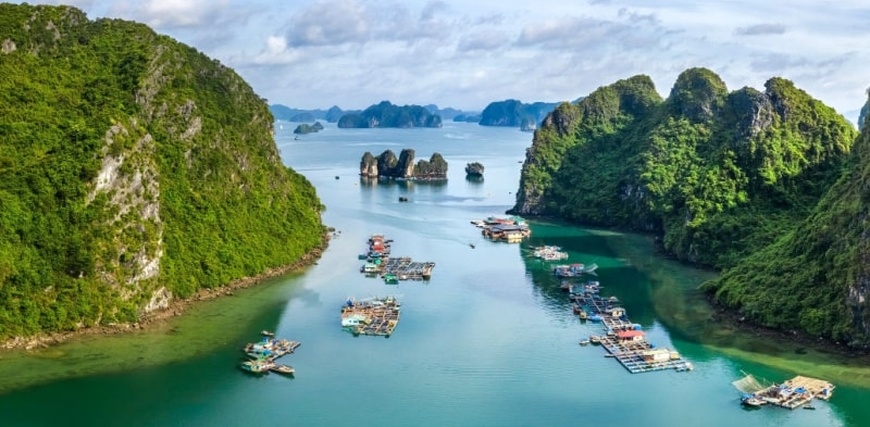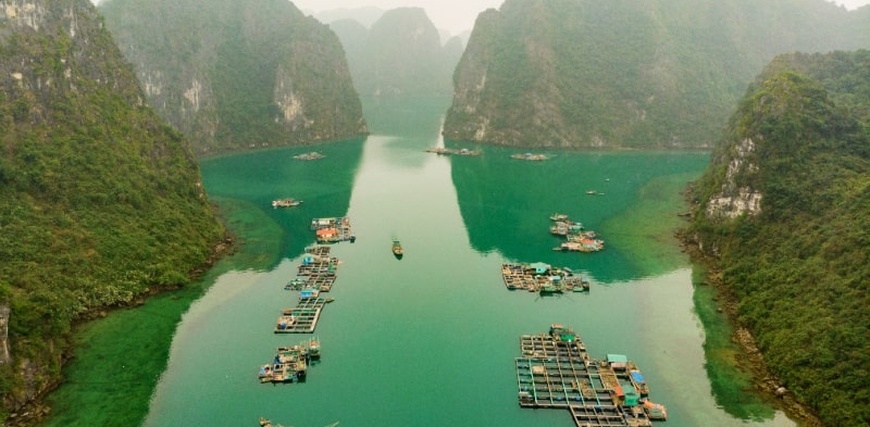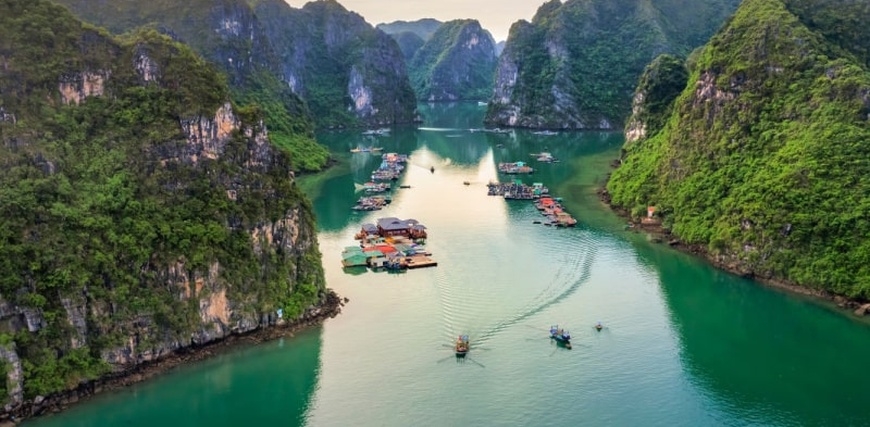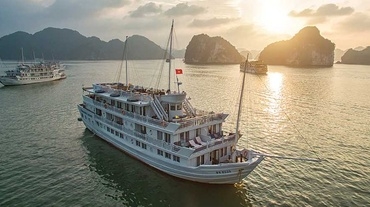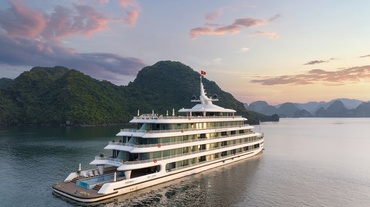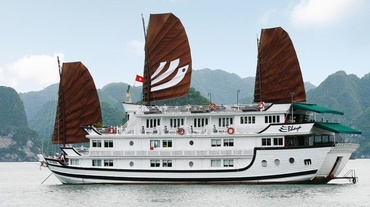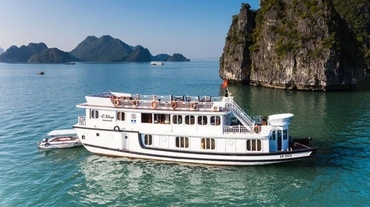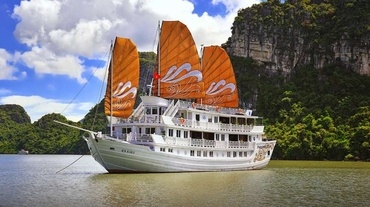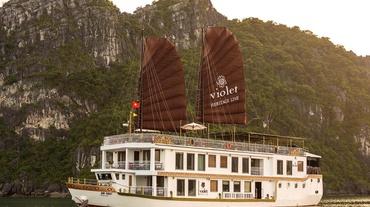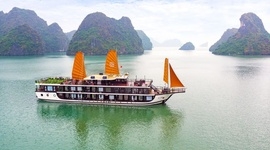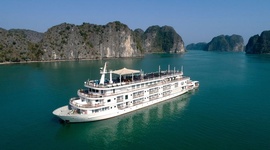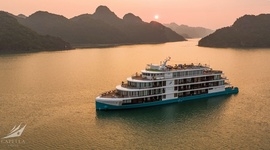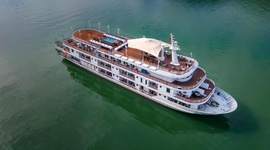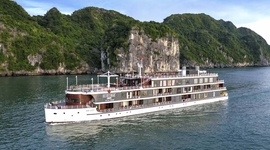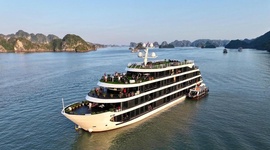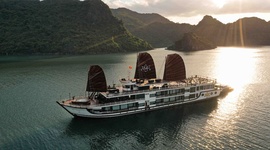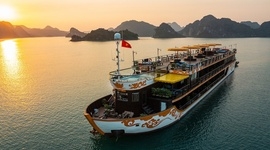Cua Van Fishing Village
Overview
Cua Van fishing village has recently become one of the most popular Halong tourist attractions thanks to its various natural and cultural features. Visitors to Cua Van fishing village will have the chance to be immersed in a tranquil environment with a beautiful natural landscape. Furthermore, you can also experience the livelihood of local fishermen, which will give you unforgettable moments.
Location & history
Cua Van fishing village stands on the site of two former fishing villages, Giang Vong and Truc Vong, together with the surrounding islands. It then became an essential part of Halong Bay. Today, the fishing village lies in Hung Thang Ward (Halong City). The nearest wharf is around 20 kilometers away from the fishing village.
The community is nestled on the tranquil sea of Halong Bay. Behind the houses in the village lies the Va Gia limestone islet, which is a perfect site for numerous boats to anchor. Cua Van fishing village is relatively far from both Halong city center and the seashore, thus it remains pretty much untapped by mass tourism and has been able to preserve its natural features.
To improve living standards for fishermen here, the authorities transferred families to the mainland at the Cai Xa Cong resettlement area of Halong City in 2014. The residents of the village; however, are still devoted to aquaculture. Every day, the boat transports them back to the Cua Van fishing village to work as well as welcome visitors; at night, the boat transports them back to the mainland.
What are special about Cua Van Fishing Village
Cua Van fishing village has emerged as an important site in Halong Bay because of its untouched nature, the attractiveness of the buildings erected at the foot of the rocky islet, and the life steeped with traditional aquaculture. This location was named by Journeyetc.com as one of the most 16 beautiful old villages in the world. It was also listed by Travel & Leisure as one of the villages with the most gorgeous shoreline in the world.
There is virtually no traffic noise here, except some oars of small boats or the echoed shouts of fishermen from over 300 houses. Albeit modest and simple, the settlement has stood the test of time and extreme weather conditions to continue to thrive and maintain its unique aquaculture.
Cua Van fishing town enjoys a lot of support and appreciation from many travelers all over the world because of its inhabitants’ exceptional sense of responsibility to preserve the surrounding environment. Every day, locals row around the hamlet collecting rubbish and debris floating on the water’s surface to reduce the danger of water contamination that can damage families and the community as a whole.
Things to do
Witness the tranquil scenery of Cua Van Village
Coming to Cua Van, you will be amazed by its serenity and picturesque scenery. You will see simple houses embraced by forested mountain cliffs, fishing boats with a lot of lights, or even sometimes the locals rowing a bamboo boat with their skillful feet. Besides, visitors can also explore other destinations and experience the local lifestyle of fishermen, such as visiting Tien Ong cave and Ba Ham lake, climbing limestone islets, going fishing, and visiting fish farms.
Kayak or take a boat trip around the village
In addition to fishing and aquaculture, local people here also serve tourists by directly showing them around the hamlet on a kayak and offering kayak rental services. The best way to discover the village is to kayak by yourself. However, if you prefer relaxation, taking a sampan boat will definitely be a good option. Kayak rental costs 100,000 VND/ hour (4.2 USD) and a ticket for a sampan boat trip costs 60,000 VND/person/hour (2.5 USD).
Visit Cua Van Floating Cultural Center
You may also prefer to visit Cua Van Floating Cultural Center. This is the place traditional activities take place, including cultural exchange sessions between tourists and local fishermen. In addition, visitors will also have the chance to learn about many historical artifacts of the local people in the past; watch documentaries that show the hard-working lives of the people here.
Learn about the daily life of fishermen in Halong Bay
Not only watching rustic floating houses or boat houses, but visitors also have a chance to talk to fishermen and listen to the stories about their tough life on the bay. Moreover, some traditional activities such as knitting nets or making fishing hooks are usually appealing to visitors. You can do these jobs yourself under the guidance of people born and raised in the fishing village.
How to get there
Cua Van fishing village is located relatively far off the shore. As a result, in order to properly explore this historic settlement, tourists might use the following means of transport:
- Chartered boat: If you visit Cua Van fishing village as a large group, you may consider chartering a whole boat with a capacity of between 30 and 50 passengers.
- Cruise: Traveling by cruise, you will have more advanced amenities and services than ships and canoes. When you go on a cruise, you will enjoy all of the high-class amenities, such as dining, resting, and admiring the gorgeous landscape, with two options of 3-star or 5-star cruises.
- The cost of meals is included in the tour price of the cruise operator. When buying a package tour, visitors will be able to go to other attractions also in this route 3, in addition, the tour can apply for a transfer from route 3 to route 2 so you can go to attractions included in route 2 such as Island Ti Top, Soi Sim Island.
- The prices of these package tours are sometimes not fixed and vary greatly across travel agents. However, you can expect the lowest prices as follows:
- 2 days 1 night: from VND 1,200,000/pax (USD 50)
- 3 days and 2 nights: from VND 1,800,000/pax (USD 75)
- The price usually does not include shuttle bus transportation, boat or kayak rental, or any value-added services. This is the lowest overall cost, depending on the type of cruise (3, 4, or 5 stars).
Cua Van Fishing Village belongs to the route to visit Halong Bay No. 3, which includes Cua Van Fishing Village, Tien Ong Cave, and Ba Dam Lake. However, the No. 3 route is relatively unpopular as there are few boats per day on this route, or even none, as this route 3 is mostly operated by overnight cruises, usually 2-day-1-night or 3-day-2 night tours on a cruise.
Conclusion and advice
To make the best trip to Cua Van Fishing Village, here are some tips for you:
- The most suitable time is from April to June. It is relatively sunny during this time of the year, making it ideal for experiencing beach tourism and exploring fishing villages.
- Visitors are recommended to wear light and airy clothes and a hat, glasses, and sunscreen to protect the skin from the sun.
- Bring medicines that can reduce motion sickness to have the best journey.
- During the peak tourism season (early June to early September), it is advisable to book a hotel room in Halong and boat tickets in advance.
- You should combine Cua Van with other famous attractions such as the Thien Cung Cave, Kim Quy Cave, and Quan Lan Island.

